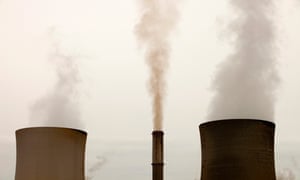Innes Willox, chief executive of the Australia Industry Group, says Covid-19 and climate are ‘urgent’ challenges that overlap
A leading Australian business group is calling for the two biggest
economic challenges in memory – recovery from the Covid-19 pandemic and
cutting greenhouse gas emissions – to be addressed together, saying it
would boost growth and put the country on a firm long-term footing.
Innes Willox, chief executive of the Australian Industry Group, representing more than 60,000 businesses, says economic recovery from the virus and the transition required to meet net-zero emissions by 2050 are overlapping issues that should be taken on together.
“There’s a lot that we can do to rebuild stronger and cleaner,” Willox planned to say on Tuesday, according to a speech released in advance.
“The need is urgent. Covid-19 and climate are bigger than any economic challenge we’ve faced in the last century.”
Willox is among a band of community leaders and industry groups
urging governments to back climate solutions in the pandemic recovery
rather than projects that entrench or increase emissions.Innes Willox, chief executive of the Australian Industry Group, representing more than 60,000 businesses, says economic recovery from the virus and the transition required to meet net-zero emissions by 2050 are overlapping issues that should be taken on together.
“There’s a lot that we can do to rebuild stronger and cleaner,” Willox planned to say on Tuesday, according to a speech released in advance.
“The need is urgent. Covid-19 and climate are bigger than any economic challenge we’ve faced in the last century.”
“The path we choose in the coming months will have significant ramifications for our global economy and generations to come,” the group, which includes Australia’s Investor Group on Climate Change, said.
In Australia, visions for a “clean recovery” or “renewables stimulus” will be the focus of two online industry summits this week. Speakers include the Queensland premier, Annastacia Palaszczuk, and energy ministers from four states.
The emphasis of the summits differs from that of the energy and emissions reduction minister, Angus Taylor, who has backed gas, a fossil fuel, as key to driving the recovery after a slump in global oil and gas prices.
John Grimes, chief executive of the Smart Energy Council, which is hosting a summit on Wednesday, said the country needed to tackle the current economic crisis and the climate crisis at the same time or it would “lurch from one major problem to another”.
“This is Australia’s moment to modernise and grow the economy, create hundreds of thousands of new future-proof jobs and position Australia as a global renewable energy superpower,” Grimes said.
Willox planned to tell a separate forum hosted by the Clean Energy Council on Tuesday that last summer’s bushfires had been a preview of what lay ahead due to climate change. His speech notes said a successful energy transition must leave no-one behind and extend beyond electricity generation to include heavy industry, transport, agriculture, buildings “and more”.
“There is immense scope for reform and investment to support that transition, and getting started during the crisis will contribute to faster recovery,” he said.
He said the industry group had consulted widely on “the most constructive directions for recovery and transition”. Opportunities raised included: improving energy management in homes and buildings by plugging drafts, modernising equipment and backing local electricity generation and storage; boosting electricity networks by rolling out smart meters and moving edge-of-grid customers on to mini-grids; helping shift heavy industry to run on clean electricity and hydrogen; and supporting large and small energy storage.
On transport, Willox said it was an excellent time to prepare cities and major corridors for mass take up of electric vehicles by installing or preparing for charging points at service stations, in public and government car parks, and at apartment blocks.
He said governments would have different preferences on whether to use regulatory reform, tax incentives, grants or other approaches. Giving the example of electricity, he said settling on a sound long-term design for market rules and climate policy could do as much to boost investment as direct public financial support.
A report by the Clean Energy Council, also released on Tuesday, estimated that 50,000 construction and 4,000 ongoing jobs could be created, and $50bn worth of renewable electricity and storage projects built, if governments backed green policies and regulatory reform to “jumpstart” the economy.
It said it would require help to overcome policy and grid transmission roadblocks that led to large-scale wind and solar investments falling 50% last year, changes to electricity market rules so the full benefits of energy storage were reflected and support for renewable hydrogen.
On a smaller scale, it would mean governments removing barriers for renters, low-income households and community groups installing solar and supporting home batteries by either reducing costs or offering low-interest loans.
Kane Thornton, the Clean Energy Council’s chief executive, said there were hundreds of large-scale wind and solar projects with planning approval that could proceed quickly, create jobs and bring down prices.
“This isn’t about a handout for industry when government is directing scarce taxpayer funding to other essential services and areas,” Thornton said.
“There is an enormous appetite for private investment in clean energy that can be unlocked through smart regulatory reform, sensible energy policy and investment in the grid and energy storage.”
The International Energy Agency last week reported a “staggering” plunge in global demand for coal, oil and gas during the pandemic, with only renewable electricity proving resilient.

No comments:
Post a Comment